Americans drove 102.7 percent as many miles in August of 2024 as in the same month of 2019, according to data released yesterday by the Federal Highway Administration. Moreover, this is the first month I can remember since the pandemic began that driving exceeded pre-pandemic numbers on all types of roads, including urban and rural interstates, other arterials, and other roads.
For a discussion of Amtrak and airline data, see this post. For a discussion of transit data, see this post.
August 2024 driving was greater than 2019 driving in 28 states, while it was less in 22 states plus DC. DC driving was slightly less than 80 percent of 2019 miles, and miles of driving were also particularly low in Delaware (82%), Hawaii (84%), West Virginia (86%), and Massachusetts (88%). Continue reading


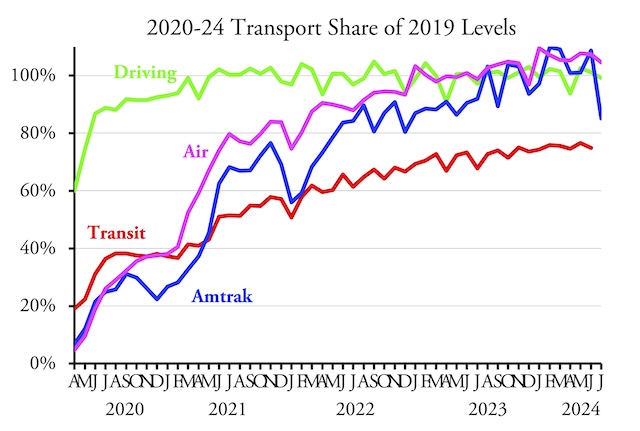
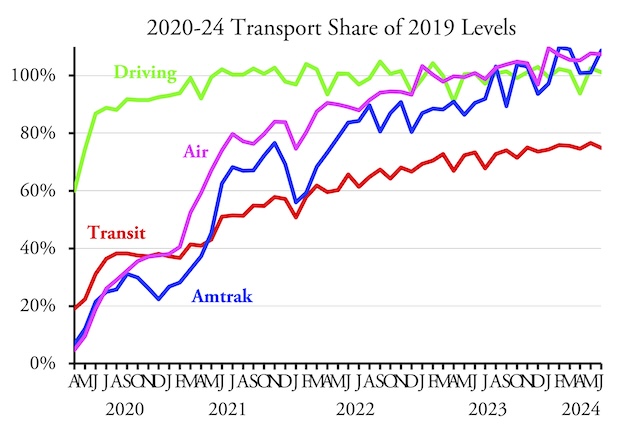
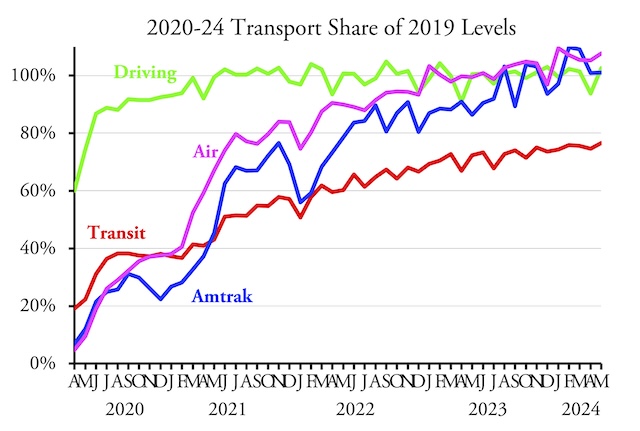
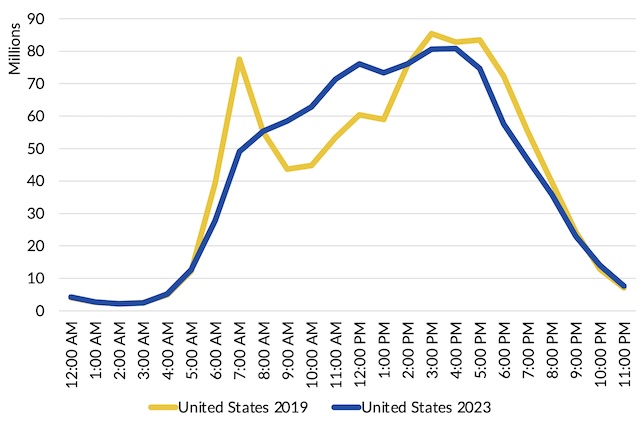
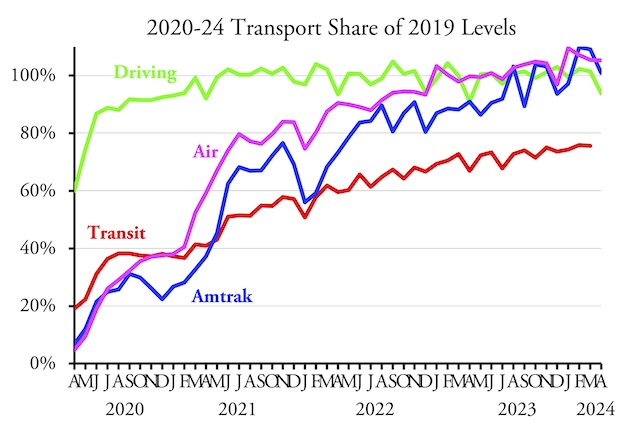
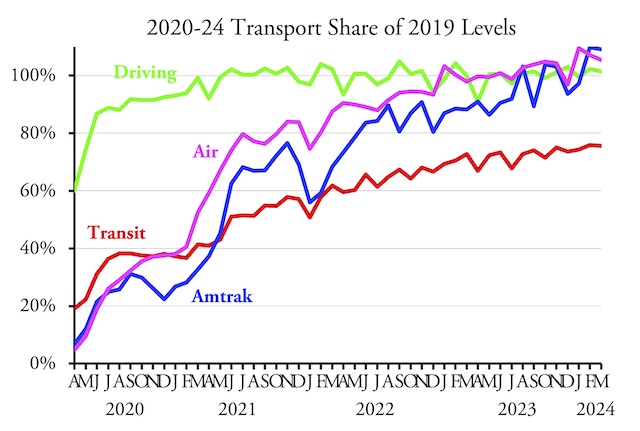
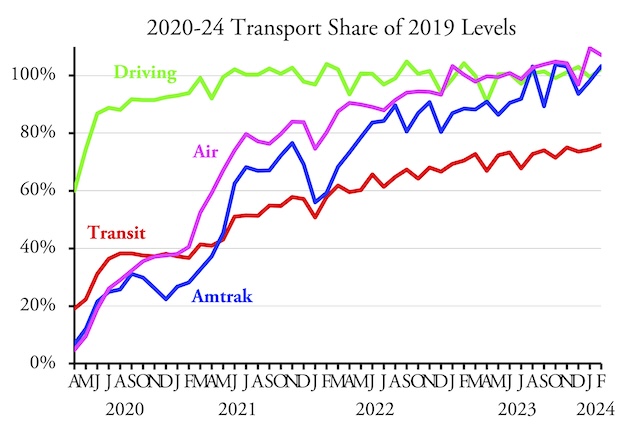 The February 2024 line for driving is obscured by the line for Amtrak, but both are approximately 102 percent.
The February 2024 line for driving is obscured by the line for Amtrak, but both are approximately 102 percent.






